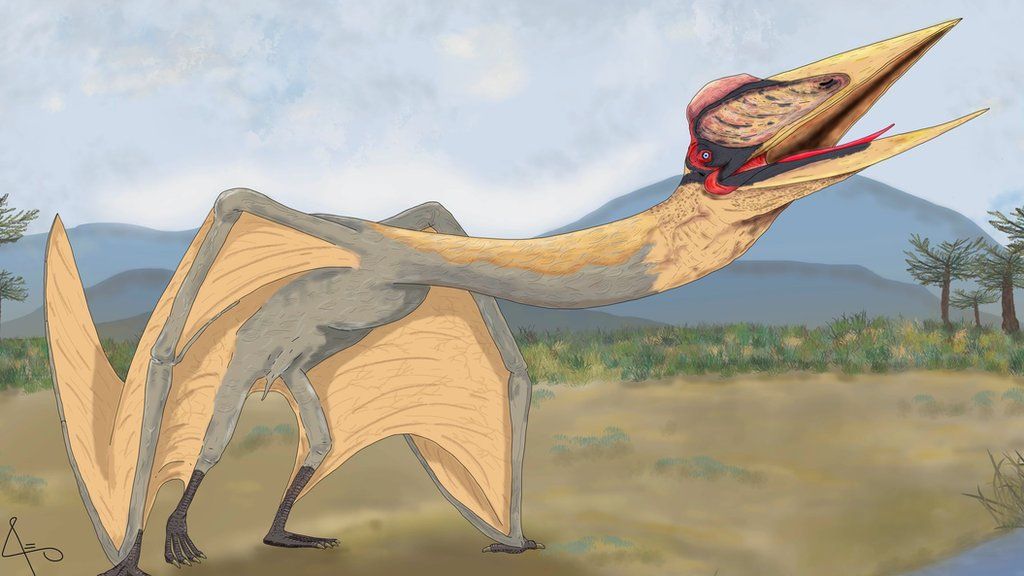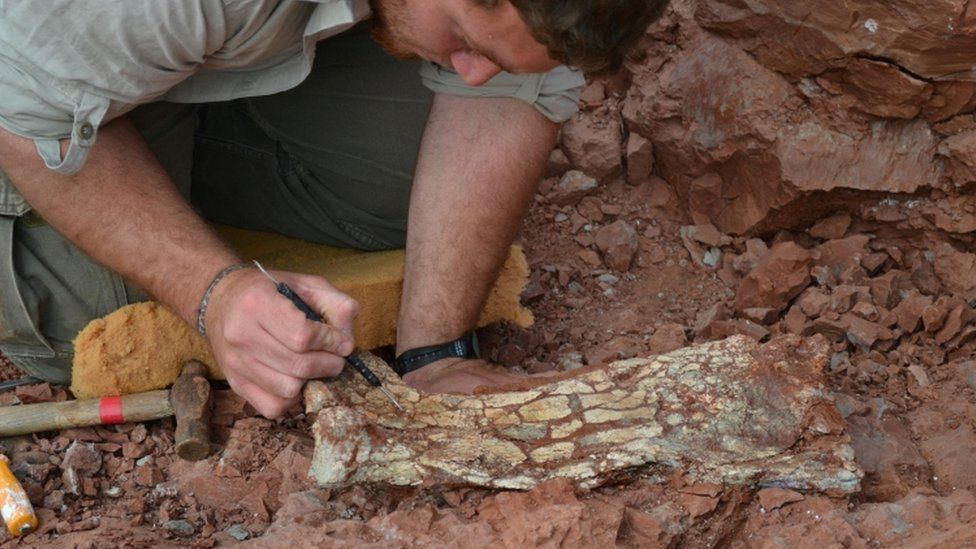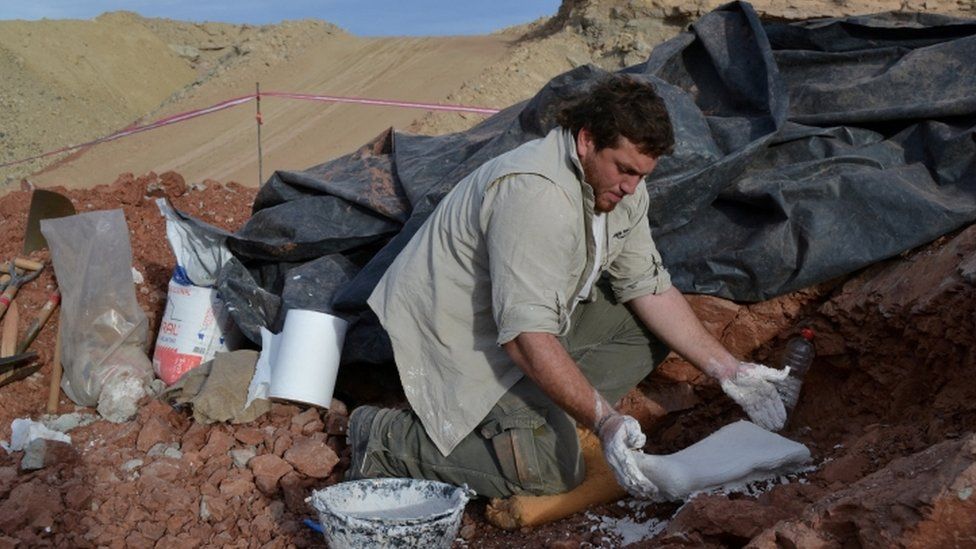Fossils belonging to the Dragon of Death – found in Argentina – date back 86 million years.

Image source, Leonardo Ortiz
Fossilized remains from a giant flying reptile the size of a bus have been discovered in Argentina.
The Dragon of Death, as scientists have dubbed the new species, hunted prey from Earth’s skies around 86 million years ago.
When fully extended, its wings measured a massive nine metres (30 ft) from one tip to the other.
The sheer size of the predator paints a “terrifying vision”, the scientist behind the find told the BBC.
“This species had a height similar to that of a giraffe,” project leader Leonardo Ortiz said, with a wingspan that “defies the limits of our biological understanding”.
Its remains had been preserved in rocks in the Andes mountains for 86 million years, which means the flying creature lived alongside dinosaurs.

Image source, Reuters
Prof Ortiz was one of the palaeontologists who originally discovered the reptile’s fossils during an excavation in Argentina back in 2012.
He chose the species’ name – Thanatosdrakon amaru – because it combined the Greek words for death and dragon.
“It seemed appropriate to name it that way,” Prof Ortiz said in an earlier interview. “It’s the dragon of death.”

Image source, Leonardo Ortiz
The reptile is believed to be one of the first predators to use their wings to hunt prey – flying through Earth’s prehistoric skies before the evolution of birds.
Despite that, Prof Ortiz told the BBC that this hunter likely spent most of its time on the ground.
Details of the creature’s prehistoric lifestyle are scant – but he added that the fact a pair of differently sized specimen were discovered together is evidence that the predator lived in groups.
The fearsome reptile lived some 20 million years before an asteroid hit the earth in a catastrophic extinction event, wiping out three-quarters of animal and plant life and marking the end of the Cretaceous Period.
In 2017 fossils belonging to an even older pterosaur, dating 170 million years ago to the Jurassic period, were discovered on the Scottish island of Skye with an estimated wingspan of 2.5m (8ft).

Image source, Reuters